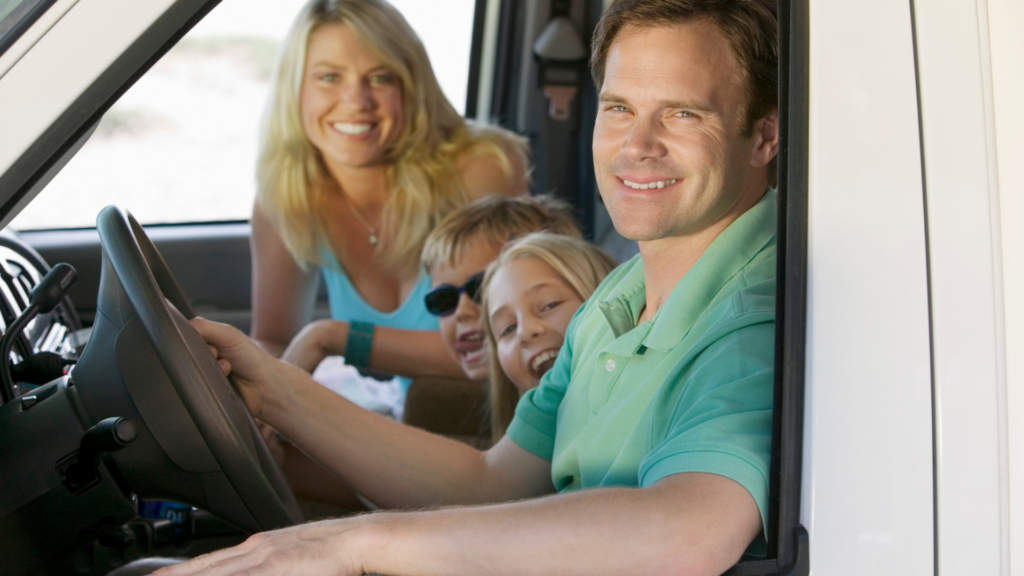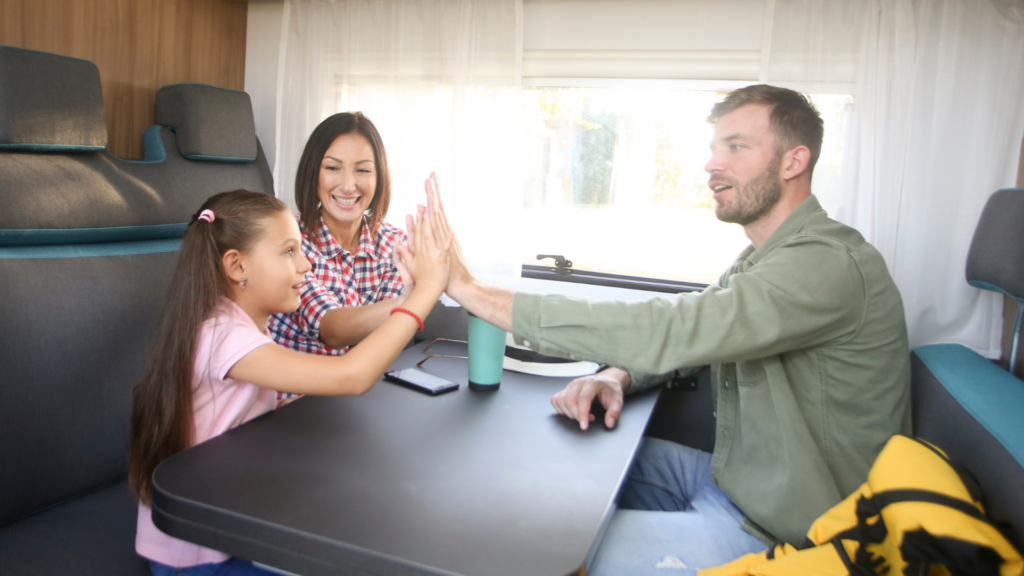With so many families hitting the road and traveling, parents often ask about educational choices. What is best for learning on the road? What curriculum should I choose? Although we can’t answer these questions for you personally, we can dive into roadschooling options. Let’s take a closer look!
What Is Roadschooling?
Roadschooling is a form of homeschooling. Many full-time traveling parents choose roadschooling because they want to teach their children about places they travel. It doesn’t require a curriculum, which gives parents the freedom to teach about where they are. And if parents want a curriculum, there are numerous choices to help guide their children’s learning.
Is Roadschooling Different From Homeschooling?
Unlike traditional homeschooling, RV roadschooling with kids is about seeing, hearing, touching, smelling, and tasting. Instead of reading about the Statue of Liberty in a book, roadschoolers visit the Statue of Liberty on Liberty Island. Instead of watching a video about the Hopi tribe’s history and culture, roadschoolers walk around the First Mesa villages in Arizona with a guide from the Hopi tribe.
But not every learning experience has to be a visit to a cultural arts center, National Park, or museum. Roadschooling families incorporate learning into their everyday lives. Cooking, grocery shopping, repairing the RV, and budgeting become part of the learning experience as parents use their daily routine to educate their children. Roadschooling is less about “time for school” and more about learning as a lifestyle.

Roadschooling Curriculum Choices Abound
When you’re just starting out, choosing a curriculum can be stressful. With so many options, how do you choose? Some people ask around and get the advice and opinions of friends and other traveling families. Others visit curriculum fairs or stores to browse through various materials. Still others choose not to have a curriculum at all and allow for child-led learning.
One popular curriculum is Time4Learning, an online education program. Because it’s designed for all ages, preschool children as well as high school students will have access to appropriate lessons. And since it’s web-based, you don’t have to have a lot of room in your RV to store roadschooling materials. This also means you have access to more than 3,500 lessons 24/7, so your child can log on early in the morning if you have a fun day planned or later after dinner if you have a long travel day.
You can use any homeschool curriculum for roadschooling. Choices like Singapore Math, The Child’s World, Abeka, and The Good and The Beautiful aren’t intended specifically for roadschooling but will certainly work. Or, if you prefer a faith-based curriculum, Sonlight, Alpha Omega, and MasterBooks are popular choices. You have to figure out how much space you have for materials, how your children learn, and what you want your lifestyle to look like. Then match a homeschool curriculum to your needs.
Is Roadschooling a Good or Bad Education Choice?
This is a personal decision. No one can tell you whether or not roadschooling is good or bad. For many families who choose to travel, it’s the best option. Parents want their children immersed in the experience and not sitting in a classroom. They want their children to understand how life is all about learning and not just between the hours of 9 a.m. – 2 p.m. Many parents will say roadschooling has opened the door to many more opportunities for their children to learn.

What Are the Benefits of Roadschooling?
Hands-on learning is one of the top benefits of roadschooling. Children can touch the pottery created by the Hopi people and have a conversation with a Hopi on a guided tour. You don’t get this in a book or video.
Another benefit of roadschooling is flexibility. If you have two long travel days coming up, you can plan accordingly. If you know that you’ll be in Wyoming in October, you can go ahead and plan to learn about rodeos and the history of Yellowstone National Park. Call and get tickets ahead of time and find materials online to support the learning experience.
The third benefit of roadschooling is the holistic learning approach. You won’t have to segment math, English, science, art, and social studies into separate classes. Children see that learning is all around them and incorporates everyday tasks. Children can practice calculating time-traveled while keeping up with a monthly budget and journaling about their favorite experiences. It’s also a great family learning experience. Parents and children alike join together in the learning experience as they travel and visit National Parks, museums, battlefields, and more.
Are There Any Downsides to Homeschooling From the Road?
Depending on the state you choose to domicile in, you may have to follow more intense homeschool laws. This can make roadschooling more difficult because you have to follow specific guidelines. Other states like Texas are more lenient, which allows for more flexibility and freedom in your roadschooling choices.

Roadschooling Can Offer Unique Educational Experiences That Traditional Schooling or Homeschooling Cannot
For many full-time traveling families, roadschooling is the answer. They long for their children to experience learning and not have learning be a chore. Roadschooling works well with many different kinds of children.
For families with multiple children of different ages, roadschooling tends to be a positive experience for everyone. The whole family can learn about Gettysburg together. This takes some of the pressure off parents to find a curriculum for preschool learners, elementary-age learners, middle school learners, and high school learners.

Leave a Reply